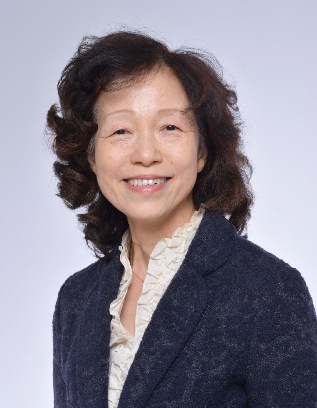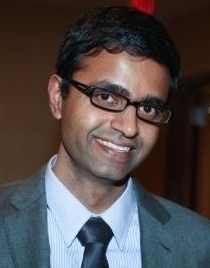Plenary Talks
Friday, September 12, 2014, 10:40-11:40, Place: Room T1, Scott Hall, Northwestern University

Title: Minimizing physical disability with robotic arms, legs, and exoskeletons
Michael Goldfarb, Ph.D.
H. Fort Flowers Professor, Department of Mechanical Engineering, Vanderbilt University
Abstract:Advances in robotics have brought to the near horizon some new possibilities with respect to the development of assistive devices for purposes of enhancing the mobility and/or functionality of persons with physical disabilities. This talk will focus on the development of three such assistive devices, which are intended to provide enhanced mobility and/or functionality for persons with lower limb loss, upper limb loss, and with paraplegia, respectively. Specifically, the talk will describe the development of a powered transfemoral prosthesis for lower extremity amputees, the development of a multigrasp hand for upper extremity amputees, and the development of a lower limb exoskeleton for legged mobility assistance in individuals with paraplegia.
Brief Biography: Michael Goldfarb, PhD, is the H. Fort Flowers Professor of Mechanical Engineering in the School of Engineering, with secondary appointments as a Professor of Electrical Engineering, and Professor of Physical Medicine and Rehabilitation in the School of Medicine at Vanderbilt University. Dr. Goldfarb is the director of the Center for Intelligent Mechatronics, the mission of which is to develop intelligent assistive devices that improve quality of life for people with physical disabilities. Dr. Goldfarb has published over 170 technical papers on related topics, including papers that were awarded best-paper awards in 1997, 1998, 2003, 2007, 2009, and 2013. Recent work includes the development of robotic limbs for upper and lower extremity amputees, and the development of lower limb exoskeletons for individuals with spinal cord injury and stroke. Recent honors include the Vanderbilt University Chancellor¡¯s Research Award in 2008, the NIH NIBIB Edward Nagy Award in 2011, the IEEE Wyss Institute Translational Award in 2012, and the IEEE Engineering in Medicine and Biology Society Outstanding Paper Award in 2013.
Friday, September 12, 2014, 14:40-15:40, Place: Room T1, Scott Hall, Northwestern University

Title: Robots as partners for promoting young children's collaborative learning
Naomi Miyake, Ph.D.
Professor, Center for R&D of Higher Education, The University of Tokyo
Abstract: Remotely controllable robots have a high potential to expand our research and practice of collaborative learning by young children. In this presentation, I propose using such robots as new research partners to study collaborative learning of young children in classroom settings. In our view, robots can play two roles: assessing children's collaborative learning and assisting the teachers involved in such learning. Collaborative learning has been practiced widely in many countries with relative to profound change in the quality of learning achievements, but, in order to better design such practices within a wider variety of cultural settings, we need stronger scientific evidence for such success, as well as a more precise explanation of the mechanisms of how and why it works.
Collaborative learning situations, to date, have been almost impossible to conduct a controlled study because children under such learning cannot and should not be controlled. Putting an adult confederate as a disguised "learning mate" is not feasible, either. Instead, a remotely operable robot, if accepted by children as a learning partner, can be "experimentally controlled" by operators to a reasonable extent making a comparative study possible. One example of such a control is to have a robot in each discussion group and have it deliver the same information to different groups, so that we can explore the effects of a particular discourse in collaboration. Using the similar situation, without controlling the deliverable information, we can compare trained operators and experienced teachers to identify both successful and not-so-successful practices characteristic to the trained teachers. This study opens a new way for on-the-job training of teachers, to change their teacher-centric practices to more leaner-centric ones.
In this presentation I will report three studies. One is to assess "characteristics of good collaborators" in collaborative knowledge construction classrooms by carefully controlling what the operators deliver to group discussions. First we devised a highly effective design of a collaborative knowledge constructive class with real classrooms, and used it to test the effects of children's spontaneous knowledge building. We have found, as long-expected but not evidenced carefully, "reliable, but not necessarily more knowledgeable learning mates" facilitate better the other children's spontaneous knowledge building than "teacher-like, leader-type more knowledgeable mates." Another study evaluated the hidden characteristics of successful facilitators in collaborative art appreciation classes. We have used a dialogic appreciation design by having a trained facilitator as operator of a robot put among the kids discussion, to identify when and how the operator guides the other kids by making the robot say something. We have found that there are an order of the utterances the trained operators use across different art works to guide the kids' appreciation from surface features, to their interpretations, to deeper interpretations that are not visibly accessible from surface features of the art works. Both the trainers and the trainees of such facilitators did not consciously identify this order. In the other study we compared operations of experimentally successful operators, all trained in learning and educational sciences, against that of highly experience teachers. The teachers, for the first time in their teaching practices, could not "lead" the kids' discussion "like a teacher," just had to watch how the discussion would develop measuring when to way what in which diction to the other members. All six teachers participated commented the high potential of such experiences, to confirm the high learning ability built in each child, as well as to understand the real process of spontaneous learning in collaborative classrooms.
I conclude the presentation by referring a future research plan to strengthen the real time assessments of collaborative learning, to take advantage of what we have found in these studies, back to classrooms.
Brief Biography: Dr. Miyake earned her Ph.D. in Psychology (UCSD) in 1982 and is currently Deputy-Director of the Consortium for Renovating Education of the Future, at the University of Tokyo. Her research focuses on investigating fundamental mechanisms for constructive interactions and then applying them to create learner-centered, collaborative classrooms. The purpose is to enable each individual learner to gain her/his own comprehension by integrating newly learned pieces of information with what has already been understood. Currently, over 900 teachers from elementary to high school throughout Japan are working with this consortium to create new curricula covering most of the school subjects. In order to scale-up this project she and her colleagues introduce heavier and regular use of IT in classrooms, including remotely operable robots. They have them act as learning partners among collaborating kids so that they could identify essential patterns of interaction for better learning. They have found that robots who ask questions were more effective than those who try to teach, to facilitate constructive interaction among the group members. They have also found that the remotely operable robots can help teachers, through acting as operators, understand the group dynamics when kids learn on their own. These cases could, in my view, start a new research methodology to turn our past experiences into future creations of better learning.
Saturday, September 13, 2014, 14:40-15:40, Place: Room T1, Scott Hall, Northwestern University

Title: The Robot Drama Project: Algorithms and open-source tools to enable robot dramatic performance
Siddhartha Srinivasa, Ph.D.
Finmeccanica Associate Professor, The Robotics Institute, CMU
Abstract: In May 2014, the Personal Robotics Lab at CMU collaborated with the School of Drama to develop, produce and stage a live theatrical performance at the Purnell Center for the Arts in Pittsburgh. In this talk, I will relive some of our unique experiences collaborating with drama faculty, the director and the actor. I will specifically describe some of the technical tools we developed: a bidirectional Blender interface for motion synthesis, manipulating speech prosody, and conductor's console for online modification. I will also explore some of the remaining challenges to our goal of developing algorithms and open-source tools that can enable any roboticist in the world to create their own dramatic performance.
Brief Biography: Siddhartha Srinivasa is the Finmeccanica Associate Professor at the Robotics Institute at Carnegie Mellon University. His research focuses on manipulation, with the goal of enabling robots to robustly and gracefully interact with the world to perform complex manipulation tasks in uncertain, unstructured, and cluttered environments. His current research focuses on physics-based nonprehensile manipulation for reconfiguring clutter, functional gradient methods for motion planning, and formalizing HRI principles using machine learning, motion planning and optimization algorithms. Sidd is a recipient of the HRI Best Paper Award (2010), ONR Young Investigator Award (2012), Okawa Research Award (2012), RSS Early Career Award (2013), and a best-paper finalist at RSS (2012, 2013), IEEE ICRA (2009, 2010, 2012), IEEE IROS (2010), and RO-MAN (2012). Sidd also captains the CMU squash team, and dreams of running ultra-marathons.